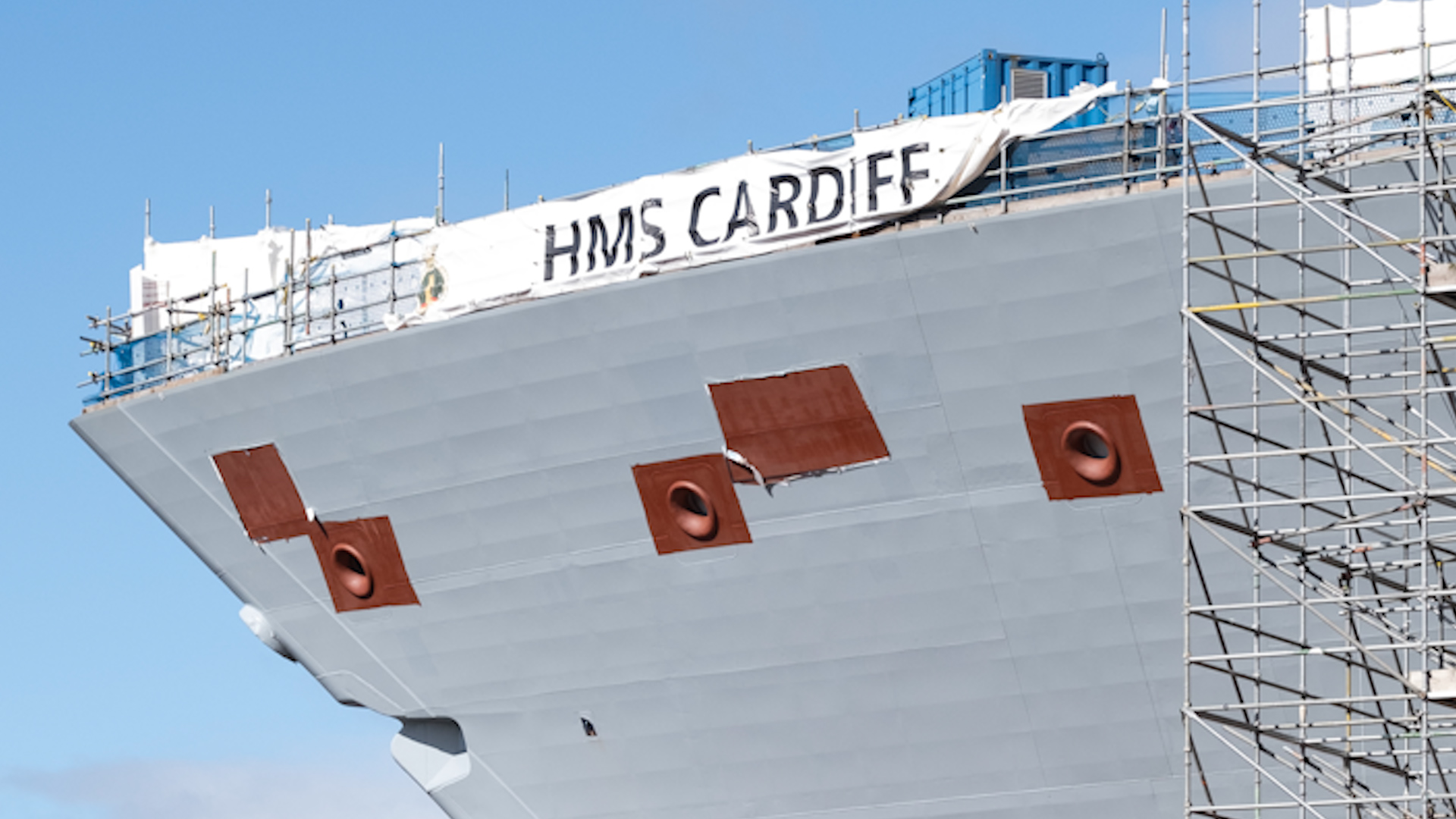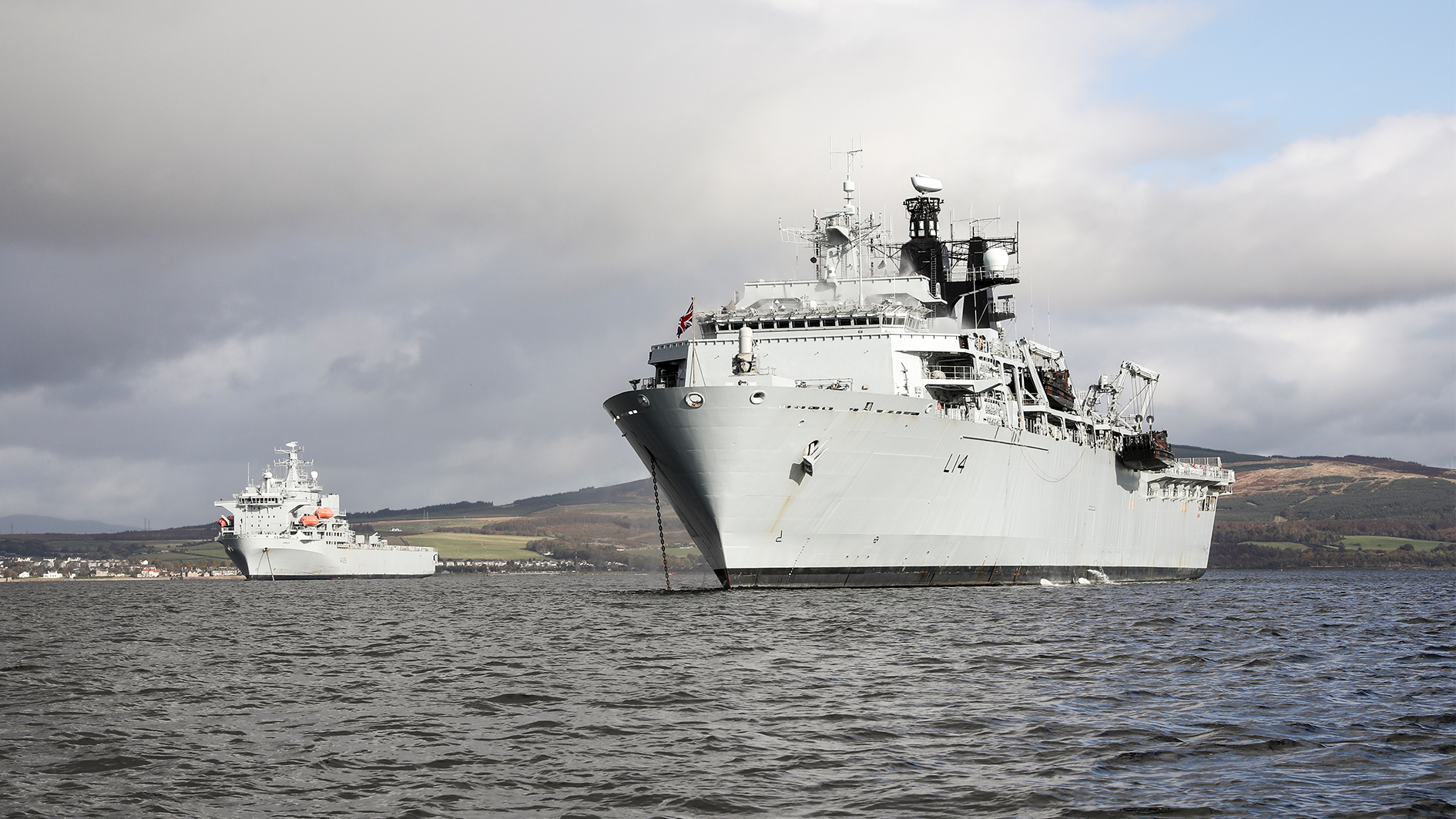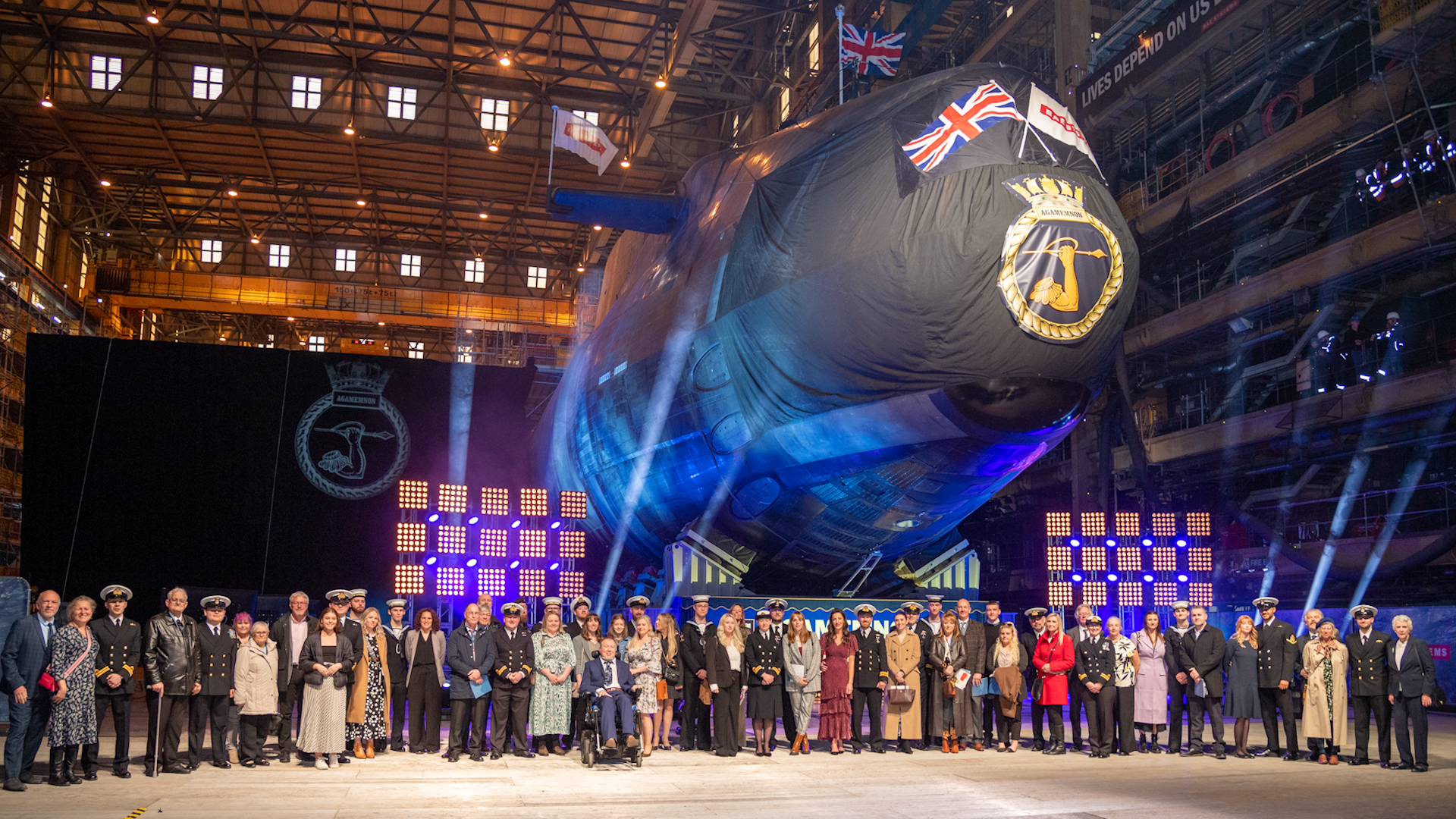
What ships and submarines are in the build pipeline for the Royal Navy?

The Government has announced a programme of up to 28 ships and submarines being built, or in the pipeline, for the Royal Navy.
Up to six new amphibious warships – part of the 28 – are for the Royal Marines and will be built in the UK, in what the Defence Secretary said represented a "golden age" for shipbuilding.
Grant Shapps said the first three vessels would be built for the Royal Marines, with another three planned for construction.
This latest announcement comes as the Government began to indicate where the recently announced rise in defence spending would be directed.
Forces News has looked at what is known so far about the type of vessels being built.
Type 26
The Royal Navy's Type 26 frigates, being made by BAE Systems in Glasgow, are already dubbed the workhorses of the warship fleet.
A total of eight ships will be built on the Clyde to replace the bulk of the fleet of Type 23 warships.
The construction contract for the initial batch of Type 26s that was awarded to BAE in 2017 came at a cost to the Government of £3.7bn – with each vessel costing up to £250m.
In addition to their primary role, the Type 26s will be able to fend off air attacks with Sea Ceptor missiles, hit targets ashore with a new main 5in gun, conduct disaster relief operations, and be equipped for a range of potential operations courtesy of an adaptable mission bay for hosting equipment such as drones, mine-hunting technology or Royal Marines raiding teams.
As of April, HMS Glasgow is in dry dock at Scotstoun being insulated, painted and outfitted.
All structural steel work is finished and most major equipment has been fitted while work is underway to install her weapons and sensors.
The advanced anti-submarine warfare vessel, designed to provide essential protection to nuclear deterrents and aircraft carriers, is scheduled to enter service in 2028.
HMS Cardiff, the second of the Royal Navy's new Type 26 frigates, is nearly structurally complete.
She is due to be floated out of the yard in the autumn and then replace Glasgow in the dry dock at Scotstoun.
As yet, Cardiff has no crew assigned to her, but in time she will take over from the destroyer HMS Dragon as the city's affiliated warship.
The new HMS Belfast, described by the Royal Navy as being designed to deliver manpower and capabilities to meet the challenges tomorrow may bring, is due to enter service in the mid-2020s.
Units for Belfast are being assembled in the Ship Block Outfit Hall (SBOH) and she will be the first ship to be constructed undercover in the new hall from the end of next year.
Belfast's missions will be varied: protecting the UK's strategic interests, nuclear submarines and delivering high-end warfighting capability whenever and wherever she is needed.

The fourth Type 26 frigate – and the fourth ship to bear the name Birmingham – began to take shape on the Clyde in April 2023.
HMS Birmingham is an £840m warship that will carry the name and motto – Forward – of England's second city around the globe for a quarter of a century.
She is estimated to enter service in the early 2030s.
In early 2025, the first steel will be cut for ship five, HMS Sheffield.
The state-of-the-art submarine hunter will be the fourth ship to carry the name, built on more than 80 years of naval history and is estimated to enter service by 2036.
HMS Newcastle, which will also be built on the Clyde, is set to provide advanced protection for the UK's nuclear deterrent and Queen Elizabeth-class aircraft carriers and will offer an anti-submarine warfare capability.
The last HMS Newcastle was decommissioned in 2005 after 30 years of service around the world, including tours to the Baltic and the Gulf. The latest vessel is expected to enter service by 2036.
HMS Edinburgh will be the seventh warship to carry the name and she is estimated to enter service between 2034 and 2036.
HMS London was announced as the eighth and final Type 26 frigate in 2018, and is estimated to enter service by 2036.
The Type 26s are expected to continue in service beyond the middle of the 21st century.
Type 31
The construction of the UK's Type 31 frigates officially got under way in April 2022 following a keel laying ceremony for HMS Venturer in Scotland.
The Royal Navy is expecting the delivery of the first five Type 31 frigates by 2028, with each vessel costing £250m.
Set to replace the Type 23 frigates, the new Type 31s are a crucial part of the Government's strategy to bolster the Navy's fleet of warships.
Regarding weaponry, the Type 31s will also have a 57mm gun, plus two 40mm guns, as well as being fitted with the Sea Ceptor missile system.
The Navy said in 2020 that BAE Systems would be producing Bofors 40 Mk4 and Bofors 57 Mk3 naval guns for the frigates.
Each ship is set to come with three Pacific 24 boats, which are used for board and search tasks as well as counter-narcotics work.
In May 2021, the MOD announced the names chosen for the five Type 31 frigates – HMS Active, HMS Bulldog, HMS Campbeltown, HMS Formidable and HMS Venturer.
The vessels, named after famous former ships and submarines from the Royal Navy's past, will be known as the Inspiration class.
HMS Active is set to be the second ship in the class, following HMS Venturer.
Fleet Solid Support ships
In January 2023, then Defence Secretary Ben Wallace announced £100m of improvements to Belfast's dockyards.
Following this was a £1.6bn contract to build three Royal Navy support ships that will see shipbuilding return to Belfast, with Team Resolute – made up of BMT, Harland & Wolff and Navantia UK – winning the contract to build the new Fleet Solid Support ships for the Royal Fleet Auxiliary.
The vessels will provide munitions, stores and provisions to ships across the Royal Navy's fleet – from aircraft carriers to frigates.
Production is set to start in 2025, while improvements to the dockyards began last year.
The three support ships, expected to be operational by 2032, are essential to the carrier-led Maritime Strike Group and will be the UK's second longest vessels – behind the two Queen Elizabeth-class aircraft carriers.
MRSS vessels
The new Multi-Role Support Ships (MRSS) will replace HMS Albion and HMS Bulwark, the Royal Navy's current amphibious flagships, which will remain in service until 2033/2034.
They will also take the place of the three Bay-class amphibious support vessels, RFAs Lyme Bay, Mounts Bay and Cardigan Bay and support ship RFA Argus.

The MRSS will be extremely versatile warships, able to deploy on a wider variety of operations, and designed to carry vehicles, aircraft, insertion craft and a broad range of uncrewed systems for complicated missions.
They will also be able to act as primary casualty receiving ships, providing urgent medical care to British forces wherever they are deployed.
Following the announcement of the three MRSS, First Sea Lord Admiral Sir Ben Key said: "I am delighted that the Secretary of State has cemented the future of our Royal Marines by committing to this new class of up to six amphibious vessels.
"These will be the most capable amphibious warships the nation has ever owned, designed to be fully interchangeable with our closest allies in Europe and in Nato."
Submarines
Last month the sixth of the Royal Navy's leading-edge Astute-class hunter-killer submarines was formally named – HMS Agamemnon.
She takes her name from the ancient Greek king and is due to be launched later this year, ahead of being commissioned into the Royal Navy.

Five Astute-class submarines are already in service – HMS Astute, HMS Ambush, HMS Artful, HMS Audacious and HMS Anson – while work is also well under way in Barrow on the seventh and final boat, HMS Agincourt.
At 97 metres long and weighing 7,400 tonnes, advanced nuclear technology means the Astute-class submarines never need to be refuelled.
They can manufacture their own oxygen and fresh water from the ocean and can circumnavigate the globe without surfacing.
Equipped with world-leading sensors, the Astute-class submarines carry both Tomahawk land attack cruise missiles (TLAM) and Spearfish heavyweight torpedoes.
Over the coming months, work will continue on Agamemnon ahead of her being rolled out of the dock hall and carefully lowered into the neighbouring basin for the first time.
That will be followed by a period of tests and commissioning of systems alongside before her maiden dive in the basin followed by departure from Barrow for sea trials and joining the rest of the Astute class at HMNB Clyde.









